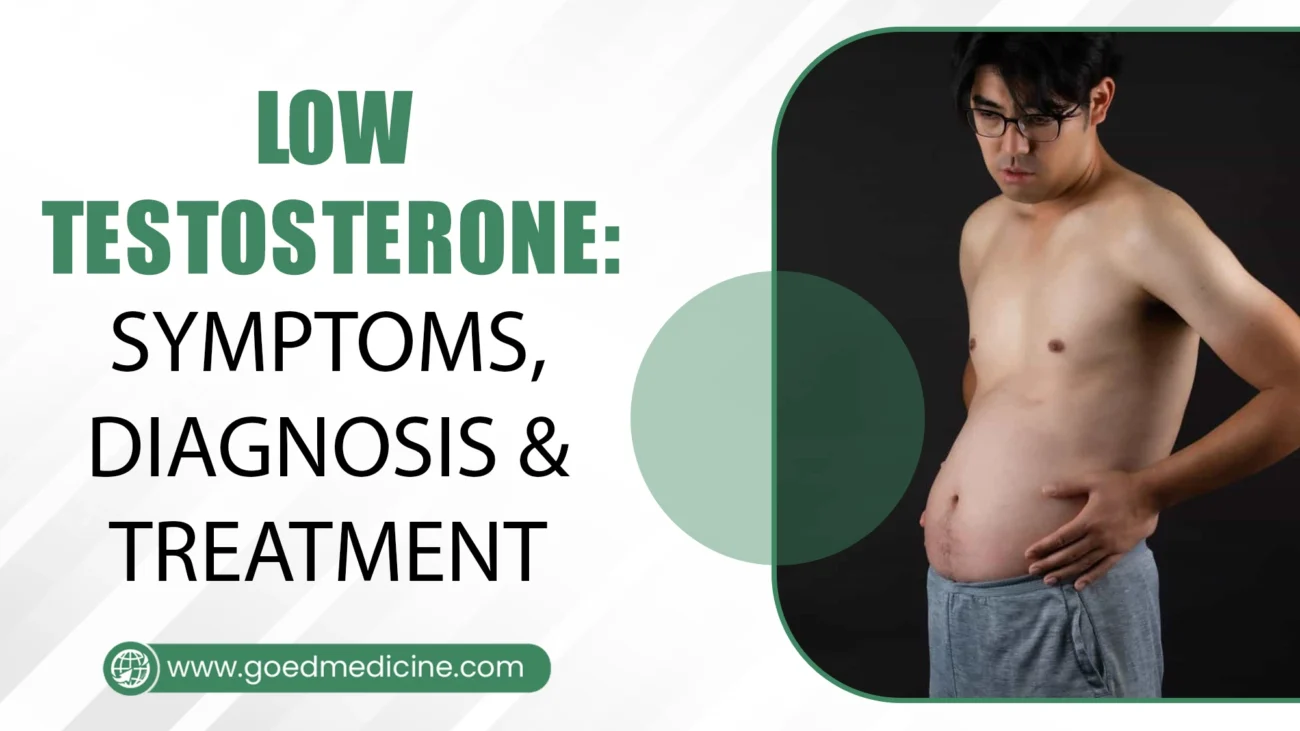Edging and Testosterone Levels: Facts, Effects & Truth
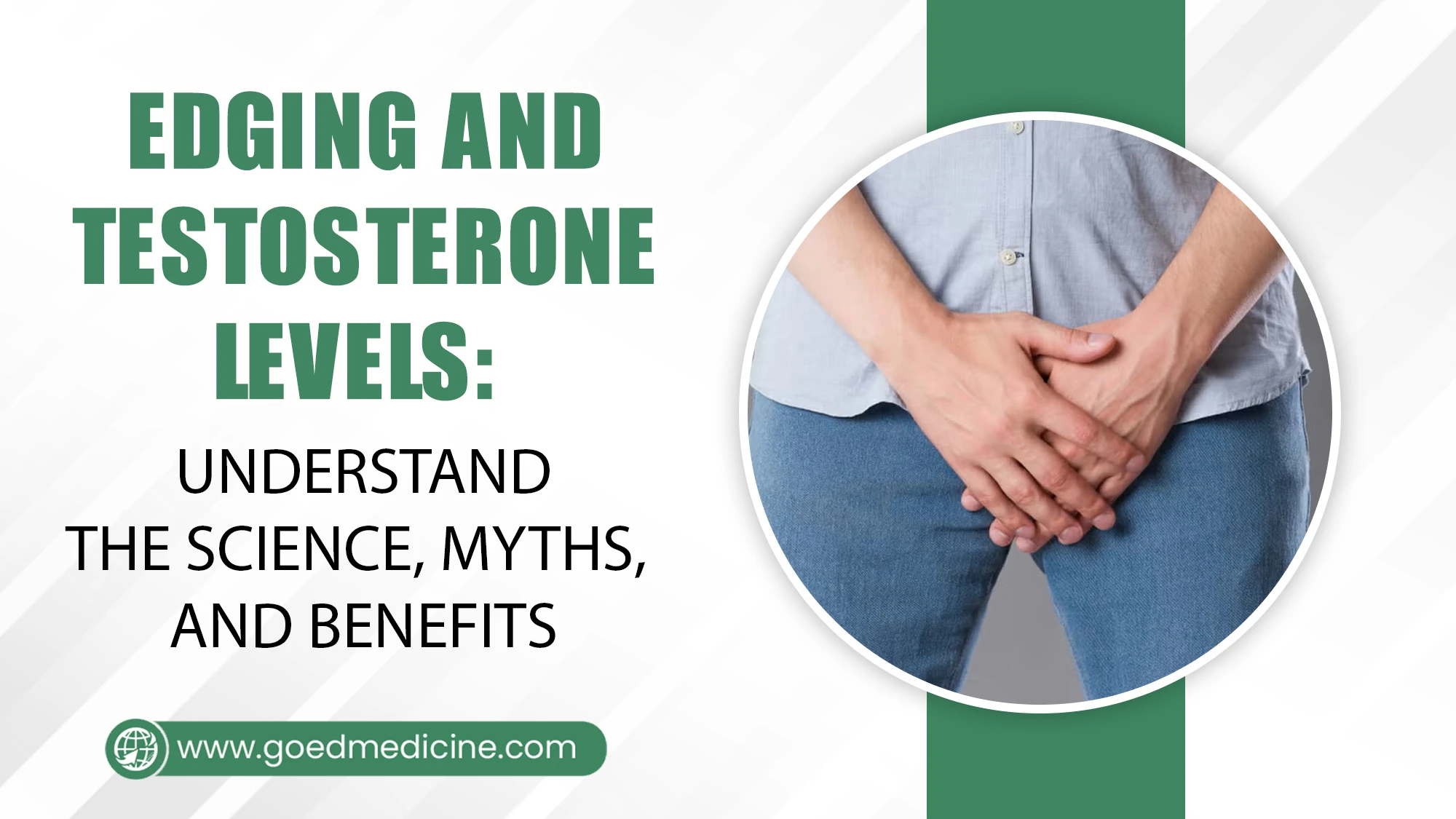
In the realm of male sex health, the interaction of sex with hormonal balance often receives significant attention. Sexual practices known as Edging, which is a popular technique among people who are interested in improving their whole-body health regarding their effects on testosterone concentrations, are still under review.
Scientific evidence must be used to understand the relationship between edging and testosterone levels. This work explores the scientific relationship between edging and testosterone levels by distinguishing between proven data and misinterpretation and fully covering all aspects of the theme.
Table of Contents
Understanding Edging and Testosterone
Edging is a sexual act that drives you to the edge of orgasm and stops you just before the climax so that you can enjoy sexual activity for a longer time. This technique is commonly used to increase the intensity of orgasm, extend the duration of sexual activity, and improve sexual experience.
Many people feel that Edging will give them more control over their orgasm, which is especially useful for premature ejaculation.
On the other hand, testosterone, which is the main male hormone, plays an important role in enhancing sex drive, coordinating energy and mood, and developing secondary sex characteristics. It is essential for male growth and the development of masculine characteristics.
Relation Between Edging and Testosterone
Many scientific studies have studied the correlation between edging and testosterone levels without reaching a definitive conclusion. Scientific evidence indicates that both masturbation and sexual activity can have short-term effects on individual testosterone levels.
Changes in hormone levels due to episodes of Edging tend to be instantaneous because they do not produce permanent changes in testosterone levels.
Studies suggest that free testosterone may show changes, but the general hormonal balance remains stable after Masturbation. According to medical tests, Edging causes temporary changes in testosterone levels but does not have a substantial effect on long-term testosterone levels.
Common Myths About Edging and Testosterone
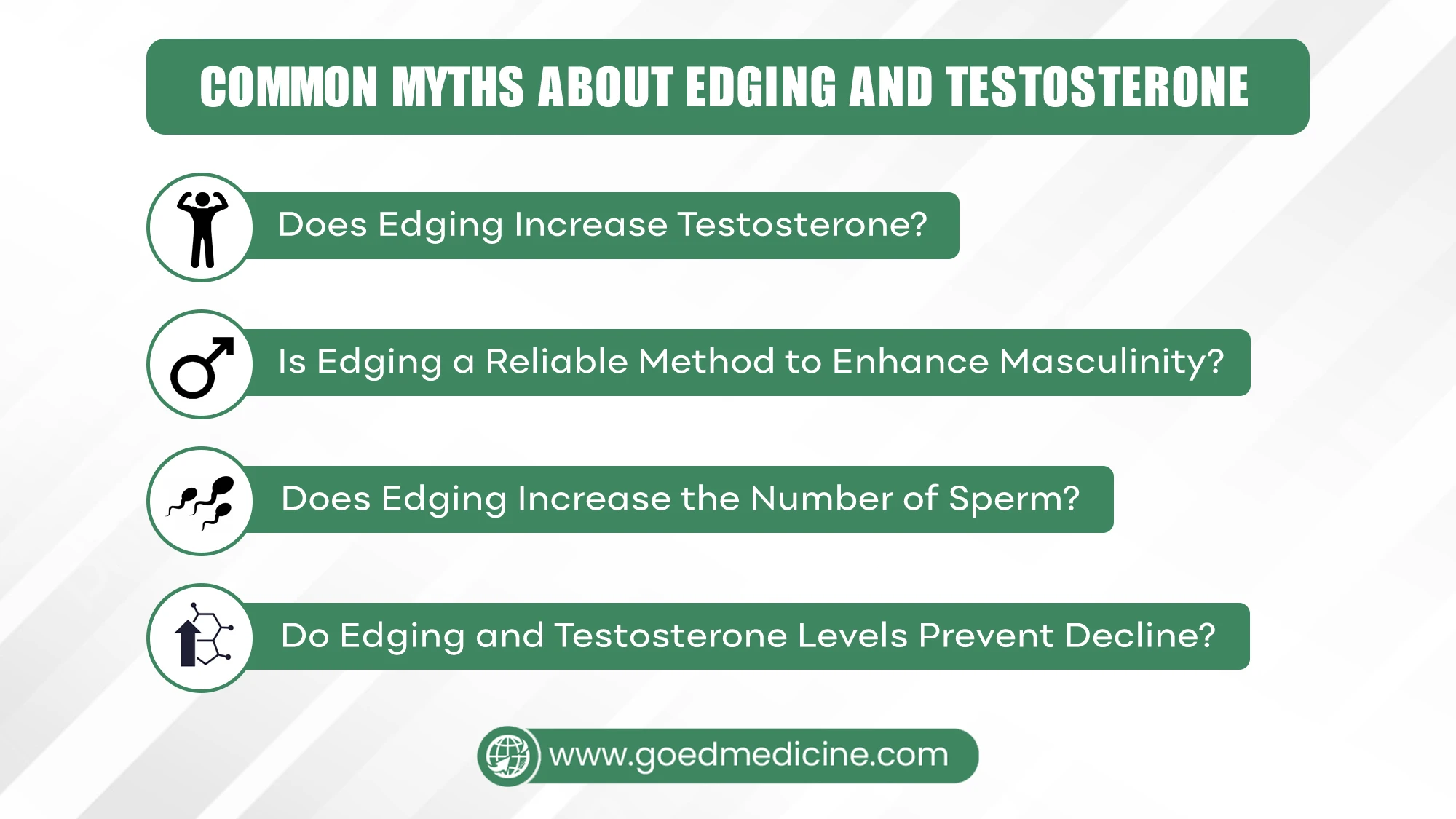
Here are some myths about Edging and Testosterone levels:
1. Does Edging Increase Testosterone?
Edging has various sexual and psychological benefits, but there is not enough scientific evidence to support the idea that edging significantly increases testosterone. Some studies suggest that sexual abstinence can increase testosterone in the short term, but the effect of long-term Edging on hormone levels is unknown.
2. Is Edging a Reliable Method to Enhance Masculinity?
The sexual practice of Edging without ejaculation due to prolonged excitement lacks the effect of enhancing masculinity. The practice of Edging brings several advantages, such as increasing sexual arousal, but does not affect the production of testosterone or change the physical features associated with male characteristics.
3. Does Edging Increase the Number of Sperm?
One of the roles of testosterone in the male body is to support the production and reproductive capacity of spermatozoa. Thus, theoretically, what increases testosterone will increase the number of spermatozoa. Also, when it comes to reputable research, there is no real scientific evidence to show whether Edging helps to produce more sperm, or whether it helps to improve quality.
4. Do Edging and Testosterone Levels Prevent Decline?
Scientific evidence shows that neither edging nor ejaculation avoidance can stop the decrease in testosterone, nor can it promote the increase in testosterone levels. Short-term ejaculation avoidance results in a slight testosterone increase, but scientists do not believe this is due to the nature of Edging.
The Potential Benefits of Edging
In addition to joy, Edging has the following advantages.
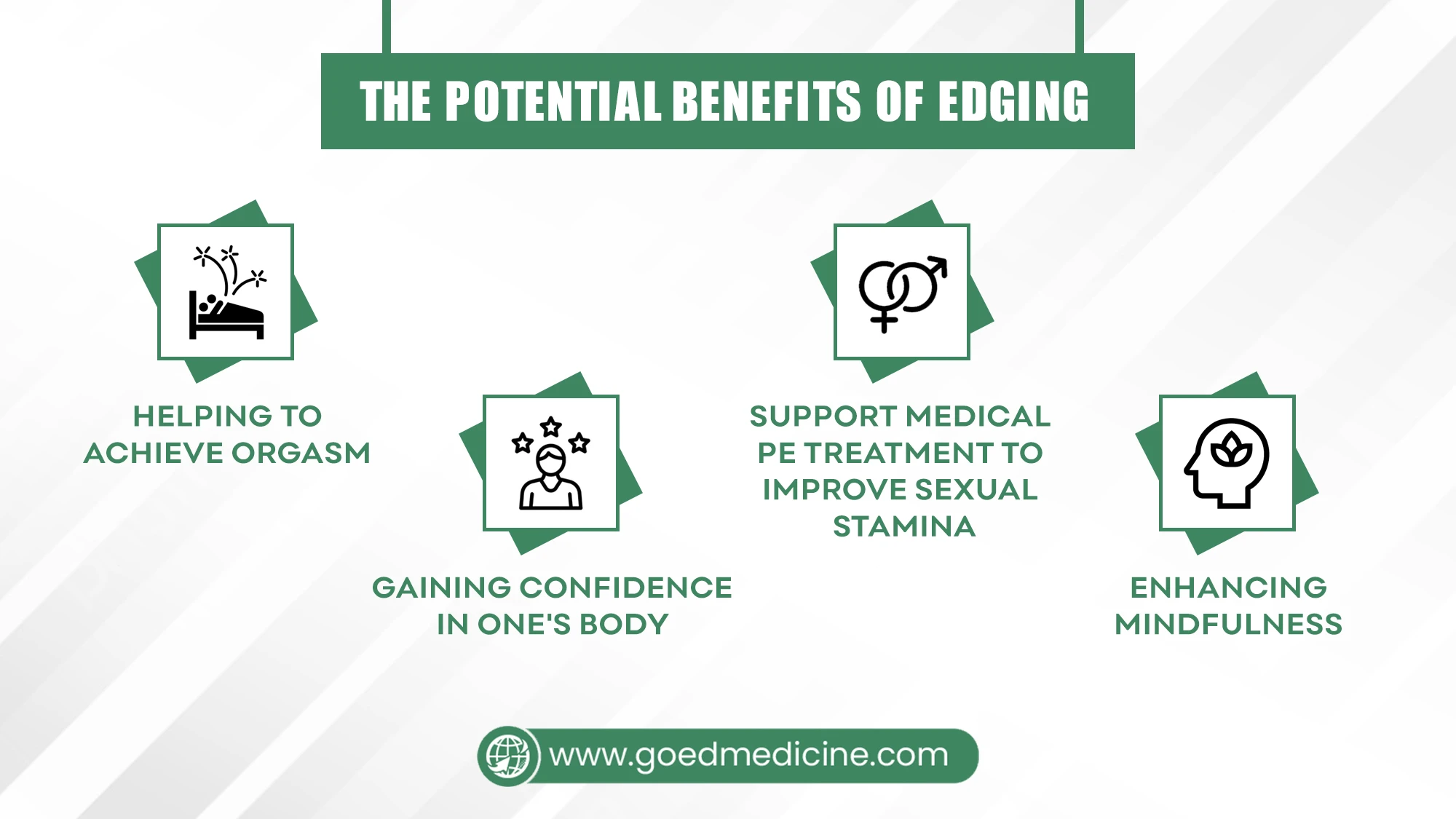
1. Helping to Achieve Orgasm
Many men and women may feel anxious when attempting to reach orgasm during sexual activity. According to one study, people with a higher frequency of onanism and Edging were able to reach orgasm more easily than those without it.
2. Gaining Confidence in One’s Body
According to a study, sexual dysfunction is rarely discussed, even among trained physical education professionals. By doing Edging, you will be able to understand and control the limits of your body. This data provides a starting point for all sorts of problems in the bedroom, resulting in a path to improve sex life.
3. Support Medical PE Treatment to Improve Sexual Stamina
According to a study, men reach orgasm more than twice as fast during sexual intercourse as women. Therefore, Edging is a delay in orgasm, which allows partners to train to tune in to each other’s sexual response cycle, build a more fulfilling sexual relationship and help to treat premature ejaculation (PE). Edging trains men to make sessions in the bedroom last longer.
4. Enhancing Mindfulness
In Edging, you need to interact with your body and think about the physical sensations that surround you. This is beneficial not only for men and women to interact with their bodies but also for better self-awareness of their limitations.
The Common Edging Techniques
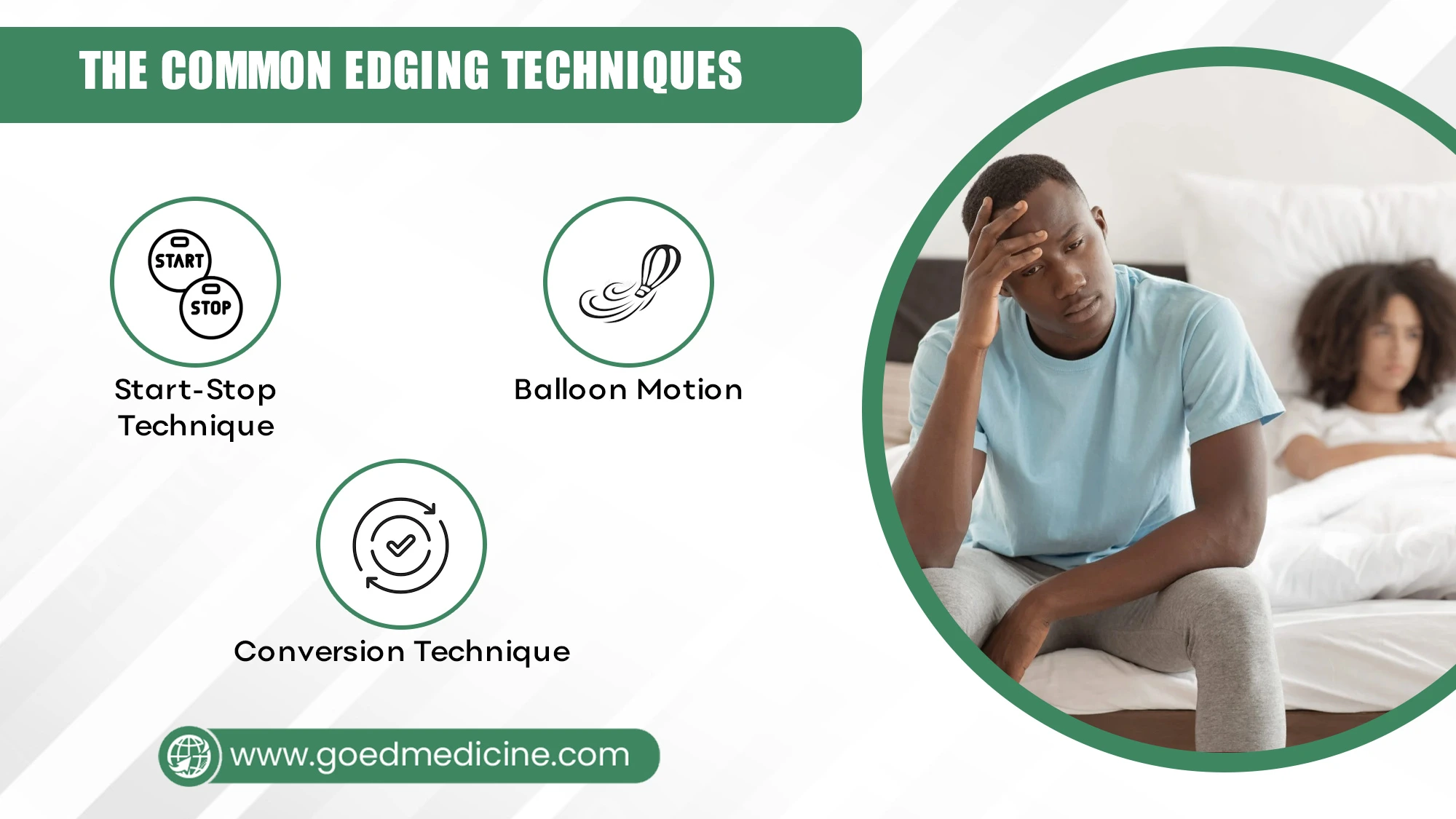
1. Start-Stop Technique
Stroke the penis when making companies. When you are about to reach orgasm, stop the stroke for a few seconds and repeat it. This way, the pleasure is extended, and you can get a more intense orgasm.
2. Balloon Motion
If you stop your hand before you reach orgasm and do Kegel exercises (pelvic floor exercises), you can do a technique called ballooning. This procedure is called erection because it expands and enlarges.
3. Conversion Technique
Once they are about to reach orgasm, they stop and gently touch another part of their body to shift. For example, once a person stops patting the penis, the partner may stimulate the chest and mouth.
Addressing Erectile Dysfunction
Erectile dysfunction (ED) exists as a widespread male medical problem that, along with general physical health, interferes with sexual health.
Available treatment options include Malegra tablets containing sildenafil citrate, which is associated with the class of phosphodiesterase type 5 inhibitors as the active ingredient. It increases the flow of blood during sex to the penis, allowing erection by sexual stimulation.
The sex disorder drug Cenforce 50 contains sildenafil citrate as a drug to deal with erectile dysfunction. Healthcare providers provide essential guidance to determine whether a particular drug will match your health needs.
Conclusion
In conclusion, Edging is a beneficial sex technique; it has nothing to do with the practice of Edging and testosterone levels in the body. Edging creates better pleasure and better control among couples and makes their sexual experience stronger.
According to scientific evidence, short-term hormonal changes caused by Edging do not lead to a permanent increase in testosterone. Edging techniques do not work as a tool to increase testosterone or increase masculinity, but they help to build confidence and regulate premature ejaculation.
Reference


